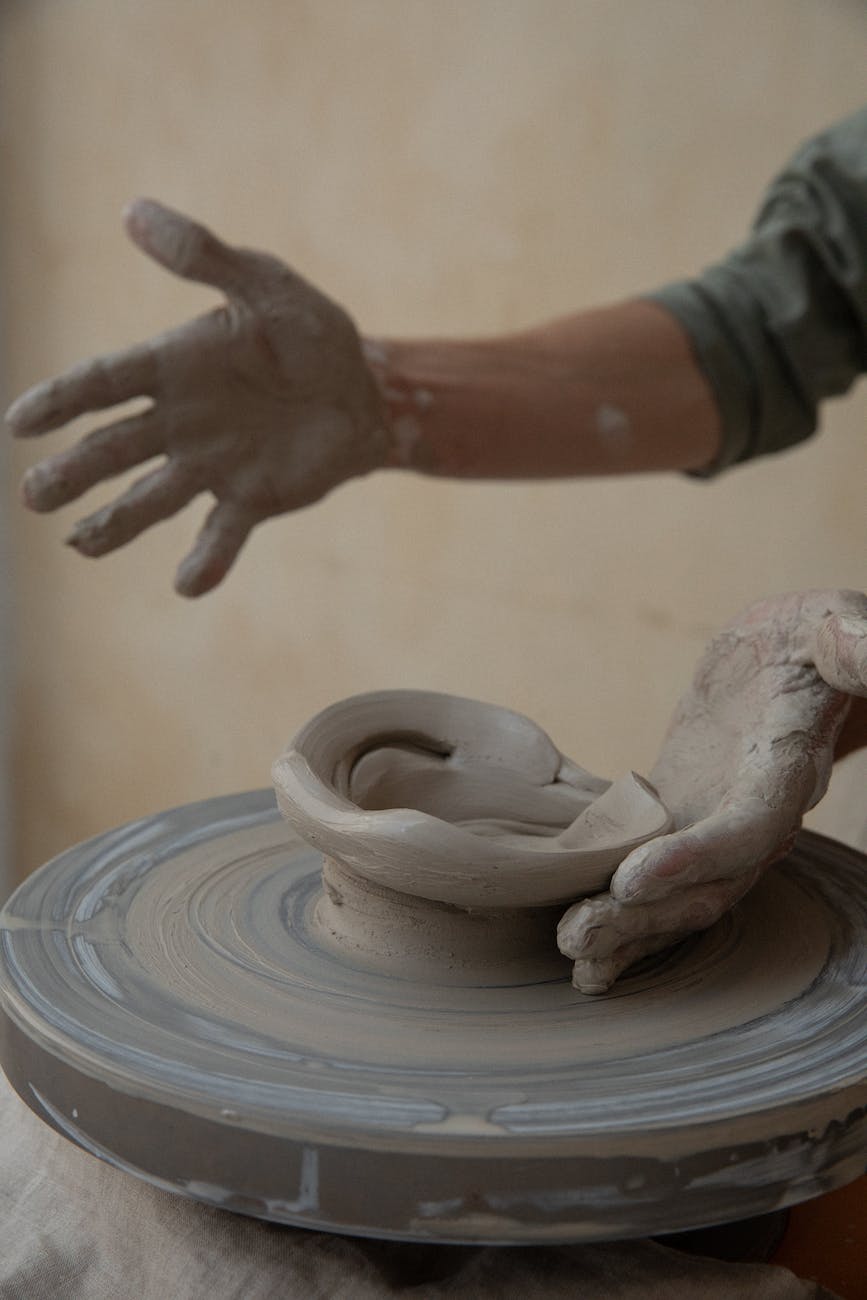Demystifying Ceramic Science: The Physics and Chemistry Behind Pottery Firing
While appreciating finished ceramic artworks and glazes, the elaborate transformations occurring within clay and glaze compounds during kiln firing remain mysteries to most. However, exploring the advanced physics and chemistry explaining these changes provides deeper insight into this alchemical process vital to pottery creation.
Clay Composition and Geologic Origins
Clay consists primarily of densely packed, plate-shaped particles of hydrous aluminum phyllosilicate minerals eroded from the chemical breakdown of rocks through water and weather over eons. The platy structure allows sliding movement when wet, enabling plasticity. Natural clay deposits show immense compositional variety based on local geology.
Hydration and Plasticity Mechanisms
Wetting clay with water allows soluble ions like sodium, calcium, and magnesium between plates to hydrate freely, forcing plates apart into a pliable state ideal for modeling forms. As water evaporates during drying, the unhydrated clay particles compact together again, solidifying shapes. The pendulum between hydrated plasticity and dehydrated rigidity allows pottery creation.
Organic Matter and Silica Impacts
Clay purity dramatically influences working characteristics and fired outcomes. Rich organic contents increase plasticity but create defects like blowing and black coring when firing. Conversely, quartz silica particles reduce workability while boosting finished ware strength. Evaluating clay composition and mineralogy predicts optimal uses.
Drying and Sintering Processes
After wet clay forms are shaped, controlled air drying removes about 20% of the water content to yield leather hard pieces safe for handling before bone dryness. Bisque firing then sinters clay particles through bridging and fusion while evaporating any residual moisture. These preliminary drying and heating processes prepare clay for glazing.
Glaze Compositions and Development
Similar to clay, glazes contain complex mineral compounds including silica as glass formers, fluxes like feldspar to lower melting temperatures, and stabilizers that confer surface qualities. Altering chemistry gives unique glaze effects. They get applied to bisqueware surfaces where high heat melting fuses glazes into glassy coatings during firing.
Glaze Functionality
Mature glazes render clay forms watertight, durable, and aesthetically enhanced. The glass phase creates impermeable barriers resistant to staining. Thermal expansion compatibility ensures glaze and clay body do not crack from mismatched shrinkage. Glazes optimize pottery functions and beauty through synergistic chemistry.
Clay and Glaze Interactions During Firing
The clay body and glaze mutually influence outcomes through ion migration, thermal expansion, and interface chemical reactions as temperatures fluctuate during extended kiln firings. Clay porosity allows glaze penetration while dissolved glaze chemicals get absorbed into the clay near surfaces. Through this dynamic interchange, the materials transform symbiotically.
Cooling and Crystal Nucleation
The final stage of kiln firing entails gradual cooling to anneal glass phases in glazes and clay matrices. As temperatures decrease, thermodynamically unstable molten glasses transition into orderly crystalline lattice structures. The controlled process determines strength, clarity, and microstructure through templated crystal nucleation and growth kinetics.
Achieving Desired Material Effects
By thoroughly understanding clay mineralogy, glaze recipes, kiln atmosphere effects, and time-temperature firing profiles, ceramicists optimize the viscous phase changes, sintering, and crystallization transformations within clay and glaze compounds to achieve the desired results from malleable ingredients to finished ceramic ware. Matter and imagination synthesize.
While physics and chemistry orchestrate fundamental changes behind the scenes, the ceramic artist guides materials through envisioned possibilities using science to unlock aesthetic wonders. Together, understanding and artistry elevate earthen dust into cultural treasures through the kiln’s alchemy.
